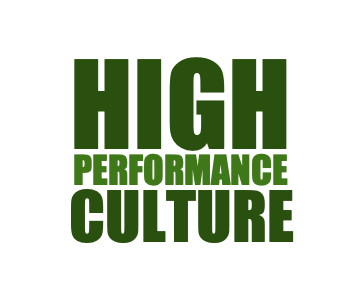A Healthy Performance Culture is comprised of Talented Employees that do 4 things...
Deliver Critical Priorities

Role Model the Right Way Of Working
Proactively Build Strategic Capabilities

Demonstrate Healthy Performance Leadership
Don't use supercomputer to solve 2 + 2
For each size of a company, there are specific tools thatBuild & Sustain a Healthy Performance Culture. Are you using the right tools in your company?
# of Employees ≈ 2-7
Focus = Forming Teams
Companies with only a few employees can sometimes create the feeling of “us vs the world”, and that can create an intense comradery. A team quickly becomes brothers and sisters in arms, and this can lead to problems. Leaders need to recognize that their company is a team, and not a family. A Healthy Performance Culture for this sized company is really just a high performing Team. Forming that team’s cohesiveness and collaboration should be the main priority.
# of Employees ≈ 5-20
Focus = Inspiring & Motivating
This phase is all about gaining a first batch of followers. Many leaders fail at this stage because they only rely on their formal authority (my way or the highway type of leaders). Leaders who build a Healthy Performance Culture are able to create a vision that inspires people to work hard. This is a critical requirement of success in the later phases. If a leader can’t get 10 people to follow their vision, they won’t be able to convince 100 to follow it either.
# of Employees ≈ 15-75
Focus = Leading Through Others
This phase is the last time the company will feel like a family (albeit a large one with way too many cousins). Leaders need to focus on working through people. At a smaller size, everyone in the company could fit in a large meeting room, but once a company grows to 20-25 employees, a leader can’t be hands -on with everyone. Many founders initially struggle to lead through others, and this is why only some become true C-Leader executives and others slowly become a figurehead.
# of Employees ≈ 50-125
Focus = Strengthening Your Culture
A company of this size is one of the last opportunities a leader has at easily making culture changes. Once a company gets above 200 employees, trying transforming a company into a Healthy Performance Culture is like turning around an aircraft carrier… slow. Leaders must take this final opportunity to cement the few critical High Performance Culture traits that they want to define their company going forward.
# of Employees ≈ 100-250
Focus = Refining your Performance Engine
The old saying is that “it’s the journey, not the destination, that’s important. In a Healthy Performance Culture, the end destination is important, but what is more important is that you build a robust “engine” that can get you to the destination and beyond. Even as you approach your goals, new strategic goals will be set further down the road. So instead of obsessing about the final destination, leaders should focus on building the high performance engine that will help them reach their goals.
# of Employees ≈ 200+
Focus = Preparing for More Growth
Once a company gets over 200 people the level of oversight and transparency multiplies. Investors want to see if the company can deliver on its promises. For some companies that means going public. This can cause a huge disruption within the company, especially if the organization or culture is not ready to provide predictable results. At this sized company (especially if they want to grow) Leaders & HR need to start preparing their Healthy Performance Culture to drive more predictability and accountability.
is built on 3 core beliefs
SPECIFIC
We are not here to force fit you into a cookie cutter shape because that’s the only model we use. Your company is unique, we will do what works best for you.
SIMPLE
Too many consultants focus on flash and not enough on substance. A Healthy Performance Culture is not built off of fancy campaigns or posters on the wall. We build simple solutions that work with no fuss.

STRAIGHT FORWARD
Sometimes consultants spend more time trying to sell extra services, and less on solving the original problem. We don’t. Our focus is on building your Healthy Performance Culture, not upselling you.







